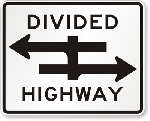The other day, on a Facebook thread I was asked a great honest question:
Do you/did you want to change your SEX? Or do you/did you want to change your “gender”?
This question wasn’t directed at me, but I felt that is something I’d like to address. The quick answer is that I changed sex. I didn’t change gender. What does all that really mean?
Before I can get into what all this means to me, let me state a few things very clearly. I am not a doctor, a psychologist or even a sociologist. I’m an engineer (a mediocre one at best), so I read books and manuals. Many of these books were about psychology, gender, biology and history. I don’t claim to understand or predict the human condition, but I can talk about my life and how I tried to understand what I needed to do to be at peace with myself.
I believe that gender is a real thing. Not in the same way that many of the transgenderist, Radical Feminist or even the fundamental Christians define the term. I tend to agree with the Merriam-Webster definition:
Gender
-
Grammatical
- a subclass within a grammatical class (as noun, pronoun, adjective, or verb) of a language that is partly arbitrary but also partly based on distinguishable characteristics (as shape, social rank, manner of existence, or sex) and that determines agreement with and selection of other words or grammatical forms
- membership of a word or a grammatical form in such a subclass
- an inflectional form showing membership in such a subclass
-
Sex
- Sex (i.e. the female or male gender)
- the behavioral, cultural, or psychological traits typically associated with one sex
As you can see the first and more common definition of gender is a grammatical thing, not behavioral. While many English speaking people don’t use gendered words, they tend to go straight to the second meaning of the word. I also would like to point out that Merriam-Webster states in the second definition that these traits are only typically associated with one sex, not absolute.
I believe that sex and gender (the second definition) are two different things. When I was born I was assigned a sex. I don’t remember anyone asking me what I should be assigned. They just did it. My parents, the doctors and nurses all conferred and based on their experience and education, assigned me to the male sex. As many theorists and bloggers will tell us, my gender education in my assigned sex began. Right there and then in the delivery room.
The problem with this education is that it didn’t work. I never accepted the behavioral, cultural and psychological traits that were associated with my assigned sex. For the next 12 years they (doctors, pastors and parents) would do their best to beat this education into me, the gender education for a male never stuck. Eventually, we agreed on a mutual peace and never discussed it. I was sent to the psychologist to deal with it, but even those experts couldn’t teach me male gender.
At the same time, my body would not cooperate with their plans. I was hormonally challenged growing up. Not enough testosterone to fully develop male secondary traits, and just enough estrogen to develop female secondary traits. Once my breasts started to bud they were ripped out by the family doctor. Let me state very clearly, I am NOT intersex. My body tried to feminize, but the family had other plans.
How does all this relate to me and my transition? I know that I have typical traits of gender and they are of the female sex. No one educated me on those traits (unless you count 60′s and 70′s television programs). They are built into my being. Even while hanging off of telephones poles at work, I was abused and taunted for my perceived gendered behavior. I tried my best to accept the sex I was given, but it would never fit who I was.
I changed sex. I allowed the hormonal imbalance to continue and supplemented it with pills. The meaty tissue around my breasts did grow a little. Enough to fill an A-cup and my hips expanded to create a small waist. By the time, I presented to the gatekeeper my desire to change (at the age of 19), they had no problem with my request.
My “gender” (yes, scary quotes) never changed. Myself, my family and the professionals tried our best to change my “gender” to fit my assigned sex, but it was something that could never be changed. That is how I know that for me gender is a real thing.
I don’t know where in the brain gender is located, but then we don’t know where in the brain our mind is located either. More than likely it is located as part of the whole brain, not in any one place. This leaves me in an interesting place. If there is no biological thing for gender (the second definition from above) then how do I understand my behaviors and traits. As I said no one actively taught them to me. There wasn’t a class at school for it.
The lessons I was given at the back of my father’s hand only taught me to keep my mouth shut and walk straight. How I saw myself and the way I preferred to behave was something that never left. What do you call that?
I don’t know. I really don’t care anymore. Call it gender, call it behavior or call it personality, it doesn’t really matter. I am what I am, and I’m at peace.
Anyway to end this and answer a question that wasn’t asked of me. I changed sex. I allowed my body to be altered to achieve peace of mind. I did not change “gender”. My behavioral, cultural, or psychological traits are those typically associated with the female sex.




 n seeing my family doctor to start hormone replacement until he became uncomfortable with continuing the treatments and he referred me to the local Dallas psychiatrist that ran a group of people transitioning. Dr. May would be my first gatekeeper.
n seeing my family doctor to start hormone replacement until he became uncomfortable with continuing the treatments and he referred me to the local Dallas psychiatrist that ran a group of people transitioning. Dr. May would be my first gatekeeper.